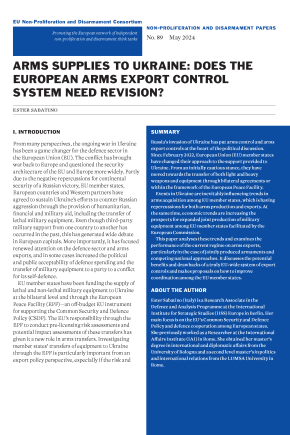Arms Supplies to Ukraine: Does the European Arms Export Control System Need Revision?
Russia’s invasion of Ukraine has put arms control and arms export controls at the heart of the political discussion. Since February 2022, European Union (EU) member states have changed their approach to the support provided to Ukraine. From an initially cautious stance, they have moved towards the transfer of both light and heavy weapons and equipment through bilateral agreements or within the framework of the European Peace Facility.
Events in Ukraine are inevitably influencing trends in arms acquisition among EU member states, which is having repercussions for both arms production and exports. At the same time, economic trends are increasing the prospects for expanded joint production of military equipment among EU member states facilitated by the European Commission.
This paper analyses these trends and examines the performance of the current regime on arms exports, particularly in the case of jointly produced armaments and competing national approaches. It discusses the potential benefits and drawbacks of a truly EU-wide system of export controls and makes proposals on how to improve coordination among the EU member states.
I. Introduction
II. EU arms export policy
III. The novelty of arms exports to Ukraine
IV. A new European approach to arms exports?
V. Conclusions and recommendations

